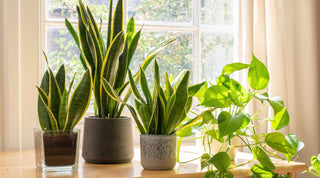Coco coir, an increasingly popular gardening substrate, is making waves among gardeners for its versatility, sustainability, and benefits to soil and plant health.
Derived from the fibrous husk of coconuts, coco coir offers a range of advantages that can enhance your gardening efforts. In this blog post, we’ll explore what coco coir is, how to use it in the garden, its benefits, and important considerations to keep in mind.
What is Coco Coir?
Coco coir is a natural fiber extracted from the outer husk of coconuts. It is processed and compressed into various forms such as bricks, blocks, or loose fibers, making it easy to transport and use. Coco coir is often used as a soil amendment or as a standalone growing medium due to its excellent water retention, aeration, and sustainability.
How to Use Coco Coir in the Garden
-
Hydrate the Coir: Coco coir typically comes in compressed bricks or blocks. To use it, first, hydrate the coir by soaking it in water. A standard 5kg brick of coco coir can expand to yield about 15-20 liters of growing medium. Place the coir in a large container, add water, and let it soak until fully expanded. This process usually takes a few hours.
-
Mixing with Soil: Coco coir can be mixed with garden soil to improve its structure and water retention. A common ratio is 1 part coco coir to 2 parts soil. This mix provides a well-balanced medium that retains moisture while allowing excess water to drain away, preventing root rot.
-
Seed Starting: Coco coir is an excellent medium for starting seeds. Fill seed trays or pots with hydrated coco coir, plant your seeds, and keep the medium moist. The coir provides a stable environment for seed germination and promotes healthy root development.
-
Potting Mix: For container gardening, coco coir can be used as part of a potting mix. Combine coco coir with perlite, vermiculite, and compost to create a nutrient-rich, well-draining medium for your potted plants.
- Mulching: Spread coco coir around the base of plants as a mulch. It helps retain soil moisture, suppress weeds, and moderate soil temperature, contributing to healthier plants.
Benefits of Coco Coir for Soil and Plants
-
Excellent Water Retention: Coco coir can hold up to 10 times its weight in water, ensuring that plants have consistent access to moisture. This property is especially beneficial in dry climates or during hot summer months.
-
Improved Aeration: The fibrous structure of coco coir improves soil aeration, allowing roots to breathe and grow more effectively. Good aeration also promotes beneficial microbial activity in the soil.
-
Sustainable and Eco-Friendly: Coco coir is a renewable resource and a byproduct of the coconut industry. Using coco coir helps reduce waste and provides an environmentally friendly alternative to peat moss, which is harvested from sensitive bog ecosystems.
-
Neutral pH: Coco coir has a neutral pH (around 6-7), making it suitable for a wide range of plants. Unlike peat moss, which is acidic, coco coir does not require pH adjustments for most gardening applications.
- Resistance to Pests and Diseases: Coco coir is naturally resistant to common soil-borne pests and diseases. This resistance reduces the likelihood of infestations and plant health issues.
Things to Consider
-
Nutrient Content: While coco coir is an excellent growing medium, it lacks significant nutrients. It is essential to supplement your plants with a balanced fertilizer to provide the necessary nutrients for growth.
-
Salt Content: Some coco coir products may contain high salt levels, which can be detrimental to plants. Look for pre-washed or buffered coco coir to minimize salt content, or rinse the coir thoroughly before use.
- Quality Variation: The quality of coco coir can vary depending on the manufacturer. Choose reputable brands to ensure you are getting a high-quality product free from contaminants.
Conclusion
Coco coir is a versatile and sustainable gardening medium that offers numerous benefits for soil and plant health. Its excellent water retention, aeration properties, and eco-friendly nature make it an ideal choice for gardeners looking to improve their growing conditions. By understanding how to use coco coir effectively and considering its unique properties, you can enhance your garden's productivity and sustainability. Happy gardening!



